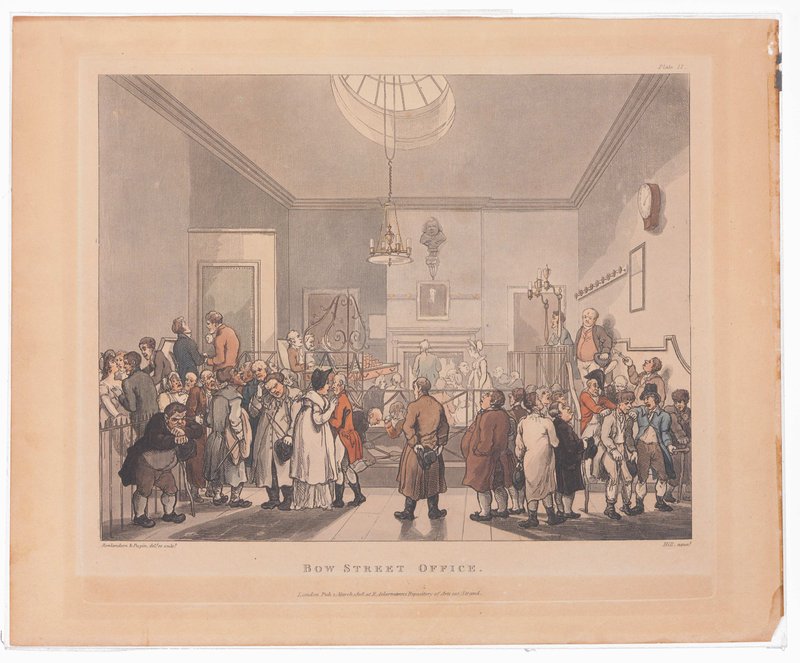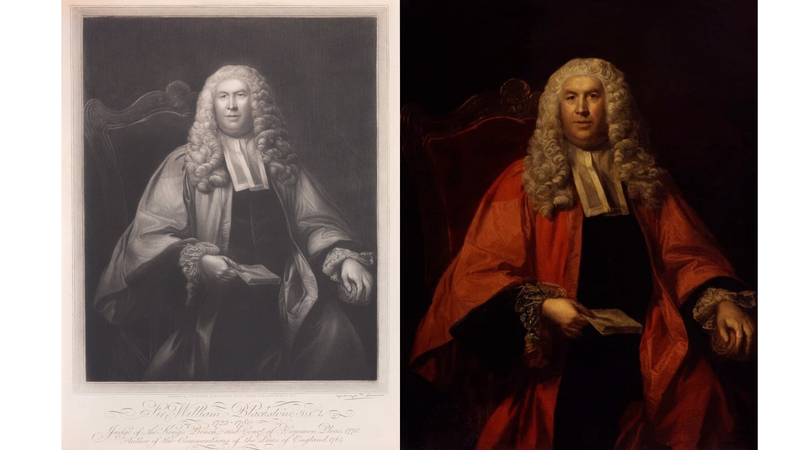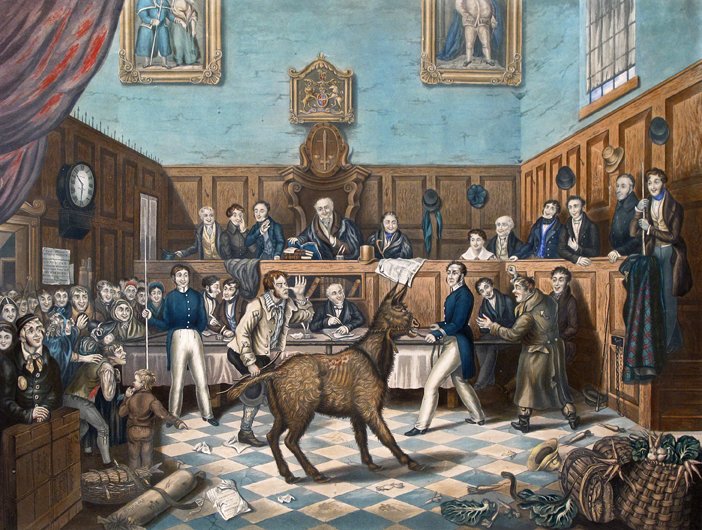


Designed and etched by Thomas Rowlandson (British, London 1757–1827 London)
Designed and etched by Auguste Charles Pugin (British (born France), Paris 1768/69–1832 London)
Aquatint by John Hill (American (born England), London 1770–1850 Clarksville, New York)
Published in The Microcosm of London, or, London in miniature by Rudolph Ackermann in 1808

Print published in London by J.F.E. Grundy
Based on 1755 oil painting by Sir Joshua Renyolds, held by the National Portrait Gallery in Londo

Designed and etched by Thomas Rowlandson (British, London 1757–1827 London)
Designed and etched by Auguste Charles Pugin (British (born France), Paris 1768/69–1832 London)
Aquatint by John Hill (American (born England), London 1770–1850 Clarksville, New York)
Published in The Microcosm of London, or, London in miniature by Rudolph Ackermann in 1808
Londoners crowd a courtroom in Bow Street, waiting to appear before a Westminster magistrate who sits on a podium in the left background. This court had been established in the 1740s to address minor crimes such as drunkenness, fighting and prostitution, and relieve pressure on higher courts such as the Old Bailey. By focusing on the waiting crowd, instead of those who administer justice, the print conveys the capital's popular energy. – Description by the New York Metropolitan Museum of Art
The courtroom functioned from 1735 to 2006 and was the cite of many notable court cases, including prosecutions of Irish poet Oscar Wilde and English organized crime figures the Kray twins. Preserved as a Grade II historically significant structure by the UK Historic Buildings and Monuments Commission, it is now home to the NoMad London hotel and the British Police Museum.

Print published in London by J.F.E. Grundy
Based on 1755 oil painting by Sir Joshua Renyolds, held by the National Portrait Gallery in London
Based on a 1755 oil painting depicting Sir William Blackstone by Joshua Reynolds (PRA) the founding President of the Royal Academy of Arts. The original portrait hangs at the National Portrait Gallery in London.
Blackstone was a prominent English politician, lawyer, Justice of the Court of King's Bench and Justice of the Common Pleas. He is best known as the author of Commentaries on the Laws of England (commonly referred to as Blackstone’s Commentaries) an influential legal treatise on the English common law that is still used in legal education and discourse.
References
Royal Academy of Art, Sir Joshua Renyolds. [Link]
The Letters of Sir William Blackstone: 1744-1780. Edited for the Selden Society by W.R. Prest., 2006. Available in print at the Barco Law Library: [Link]
Images
National Portrait Gallery London, Sir William Blackstone, 1755: [Link]
Commentaries on the Laws of England
Available on microfilm at the Barco Law Library: [Link]
Available in print from the Barco Law Library International Collection: [Link]
Available electronically via Heinonline: [Link]
Available electronically via LLMC: [Link]

This print depicts the prosecution of London costermonger (traveling fruit and vegetable seller) Bill Burn, the first conviction under the Cruel Treatment of Cattle Act 1822. This legislation was popularly known as Martin’s Act after its author, Irish Member of Parliament Richard Martin, who was referred to widely as “Humanity Dick” for his compassion towards animals.
Despite the seriousness of the subject matter, there are several satirical elements visible in this print. P. Mathews Stourbridge, the print’s creator, incorporates several self-referential elements. As indicated by a public notice beneath the clock reading “Whereas P. Mathews having been CONVICTED of stealing material from a popular song and MURDERING the subject” this print portrays a scene from the popular song The Trial of “Bill Burn” Under Martin’s Act.
References
Raven, Jon. 1977. The Urban & Industrial Songs of the Black Country and Birmingham. Wolverhampton: Broadside, p. 119-120. A Donkey’s Day in Court, History Today. [Link]